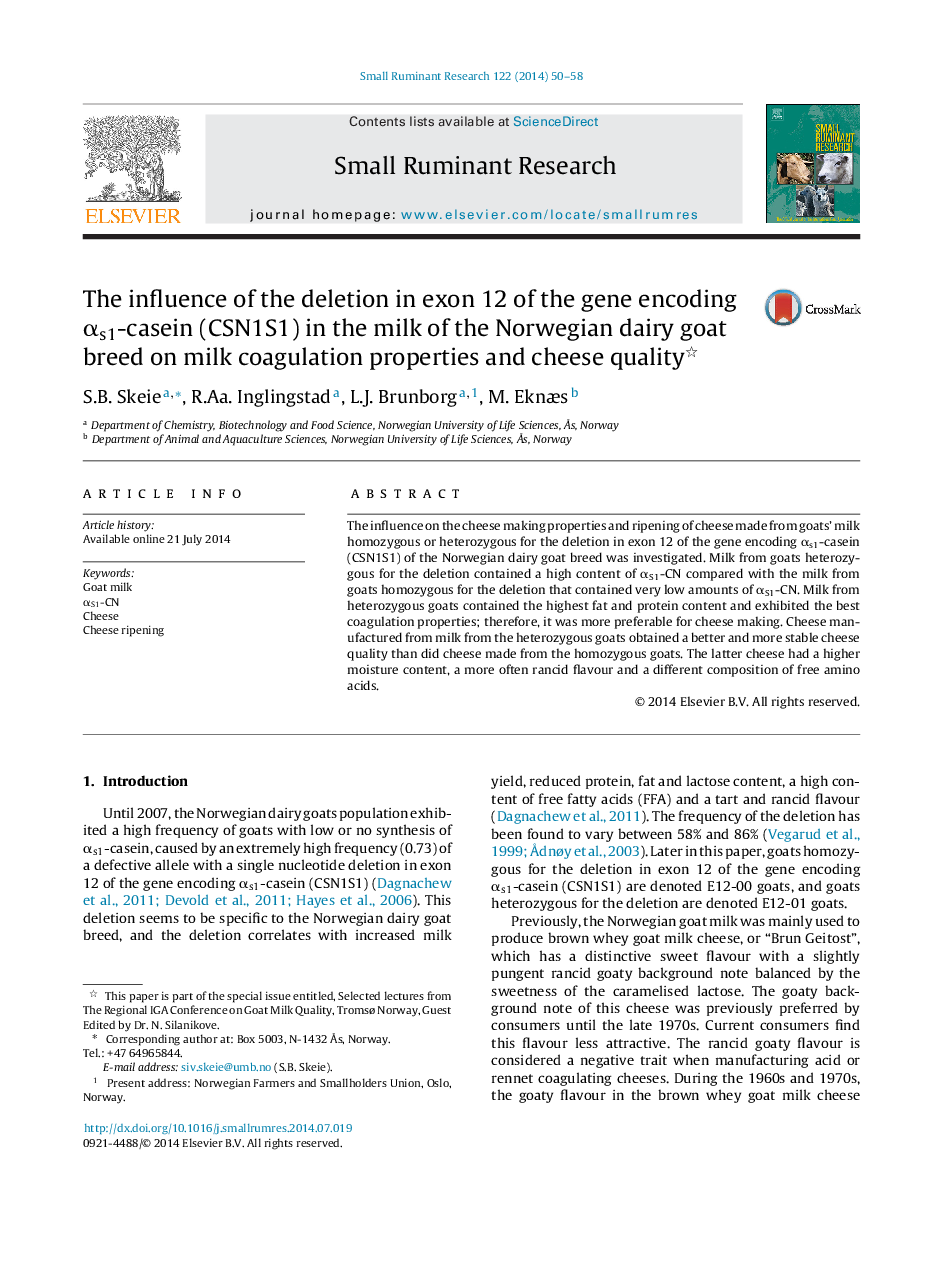| Article ID | Journal | Published Year | Pages | File Type |
|---|---|---|---|---|
| 2457016 | Small Ruminant Research | 2014 | 9 Pages |
The influence on the cheese making properties and ripening of cheese made from goats’ milk homozygous or heterozygous for the deletion in exon 12 of the gene encoding αs1-casein (CSN1S1) of the Norwegian dairy goat breed was investigated. Milk from goats heterozygous for the deletion contained a high content of αS1-CN compared with the milk from goats homozygous for the deletion that contained very low amounts of αS1-CN. Milk from heterozygous goats contained the highest fat and protein content and exhibited the best coagulation properties; therefore, it was more preferable for cheese making. Cheese manufactured from milk from the heterozygous goats obtained a better and more stable cheese quality than did cheese made from the homozygous goats. The latter cheese had a higher moisture content, a more often rancid flavour and a different composition of free amino acids.
